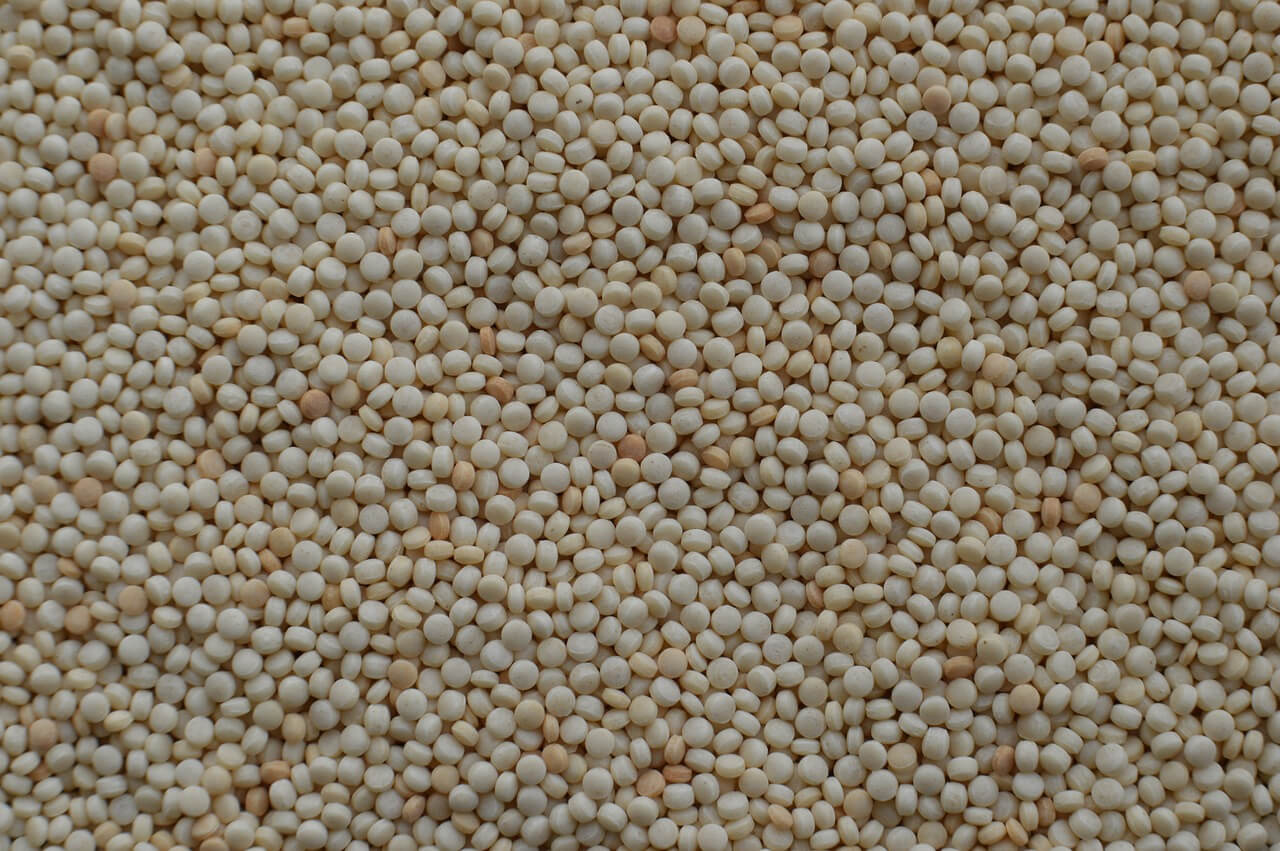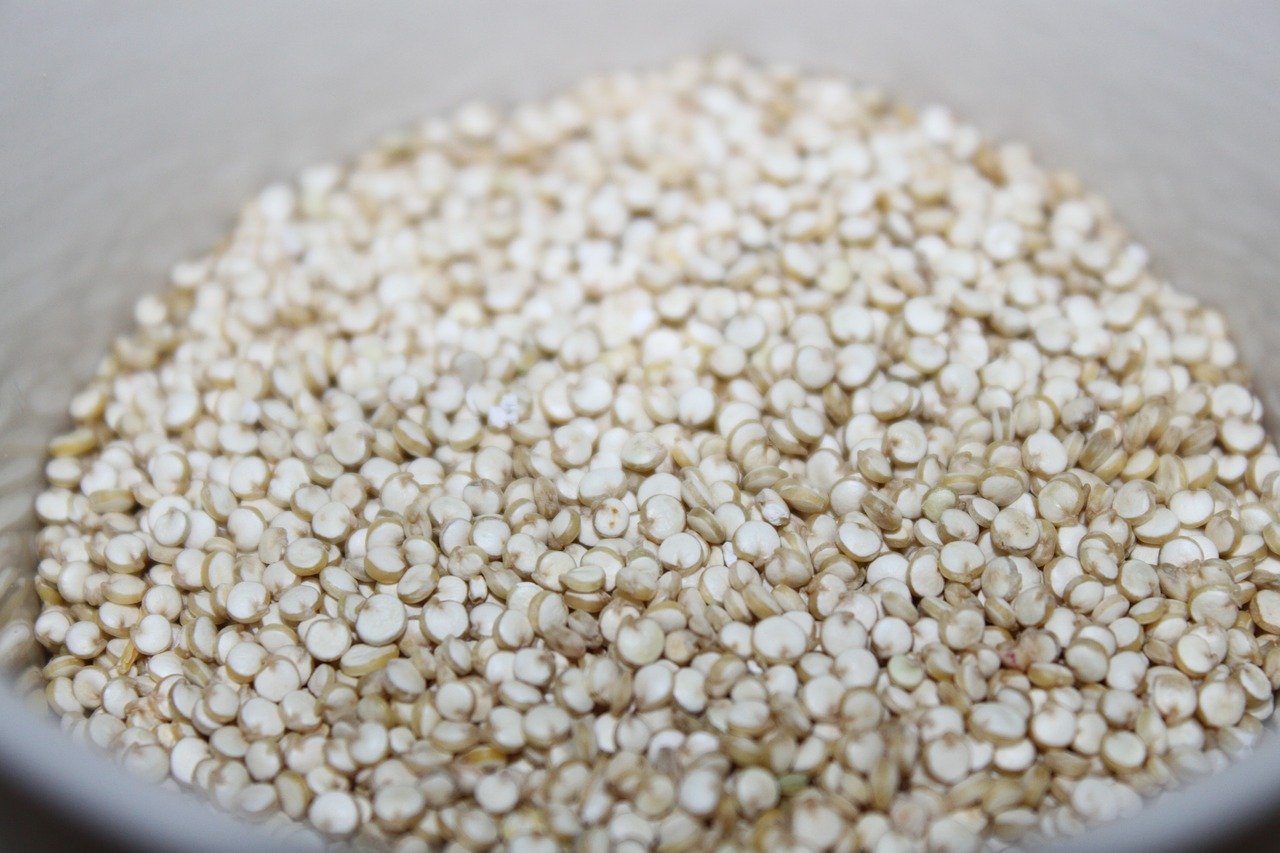Quinoa and couscous are both different and similar to each other in a variety of ways. They are grain-like foods that are often used in the place of pasta or rice. The grains of each are a similar small size and can be pretty similar in appearance once cooked, depending on the type you use.
The main differences are that couscous comes from wheat while quinoa is not a grain at all but a pseudo-grain and actually the seeds of a plant. Let’s delve deeper and find out more about the difference between quinoa and couscous.
What You'll Learn Today
Which is Better Couscous or Quinoa?

When evaluating which is better, it depends on what attributes you are looking for. Couscous comes from wheat and cannot be used by someone with a wheat or gluten allergy, while quinoa is a seed from the quinoa plant and contains no gluten.
However, even though quinoa is gluten-free, it does contain some of the proteins present in gluten. This means some individuals with celiac disease may experience symptoms after eating quinoa.
Vitamins and Minerals
If you’re looking to increase the amount of Selenium in your diet, then eating couscous is better than quinoa, as it contains 45% more. But if you want higher levels of Manganese, Folate, or Iron, then quinoa is the way forward.
Selenium is a mineral that is often low in our diet. This vital trace metal is necessary for a healthy heart, immune system, and thyroid support.
Antioxidants
It also has a powerful antioxidant effect on the body, helping to ward off some cancers and premature aging.
Quinoa is also high in antioxidants that may help with inflammation, diabetes, and some cancers.
Low Fat
The two are considered low-fat foods, although couscous has approximately 12 times less fat than quinoa. The fats found in quinoa are mostly made up of a healthy variety of omega-3 and omega-6 fatty acids which are vital for good health.
Carbohydrate and Protein
Both foods contain a very similar amount of carbohydrates and protein. But not all things are made equal.
Proteins are made up of amino acids, which are divided into two groups – essential amino acids, which we must get from the foods we eat, and non-essential amino acids, which our body can manufacture for itself.
Very few foods contain all the essential amino acids, but quinoa is one that does, making it a very valuable protein source, especially for vegetarians.
Although the amount of carbs are very similar in both couscous and quinoa, the higher level of fiber in quinoa means it fills you up for longer. It also provides a lower GI (glycemic index) score, making it less likely to spike blood sugar.
Nutritional Values of Couscous and Quinoa
Per 3.5 ounces (100 grams)
| Quinoa | Couscous | |
| Calories | 120 | 112 |
| GI Score | 53 | 65 |
| Carbohydrate | 0.751 ounces (21.3 grams) | 0.818 ounces (23.2 grams) |
| Protein | 0.155 ounces (4.4 grams) | 0.134 ounces (3.8 grams) |
| Fiber | 0.098 ounces (2.8 grams) | 0.049 ounces (1.4 grams) |
| Fat | 0.067 ounces (1.92 grams) | 0.005 ounces (0.16 grams) |
| Selenium | 5% Recommended Daily Value (RDV) | 50% Recommended Daily Value (RDV) |
| Manganese | 27.4% RDV | 3.5% RDV |
| Folate (Vit B9) | 10.5% RDV | 3.7% RDV |
| Iron | 8.2% RDV | 2.1% RDV |
To see more about which is healthier, couscous or quinoa, take a look at this video:
Do Couscous and Quinoa Cook the Same?
You can cook couscous and quinoa in a similar way. For the couscous, it is usual to cover it in boiling water and allow the couscous to expand and soften.
For quinoa, the standard method is to put it into boiling water and simmer until it softens. However, there are better methods if you want to get the best results.
Flavor
Neither couscous nor quinoa has a particularly strong flavor of its own. It is the addition of other ingredients such as cinnamon, ginger, saffron, and coriander added to Moroccan dishes made with couscous that bring it to life.
To give more flavor to quinoa, it is popular to toast or sprout the grain before cooking to give it a richer nutty taste.
Traditionally, couscous is steamed in Morocco. This allows the grains to absorb more water and fully inflate and soften. Spices and herbs, flavored oils, or dried fruit can be added, and slow-cooked meats and their juices are also common when combined with various vegetables to create a complete meal.
Saponins
With quinoa, there is one important step to take before you cook it, to get rid of the saponins. What on earth are saponins, I hear you ask. Well, they are a chemical the grain produces to keep birds and insects away and to protect them while passing through an animal’s digestive tract. Saponins have a bitter, soapy taste.
Over time, not removing saponins may contribute to leaky gut syndrome.
The best way of removing the saponins is by rinsing the grains of quinoa in a sieve under running water for a minimum of 30 seconds.
Once rinsed, the quinoa can be cooked in water or stock to add flavor that has been brought to a boil and set to simmer. You’ll know when it’s done as the grains become fluffy and the endosperms (little tail-like pieces on the grains) pull away.
Once cooked, couscous has a soft texture and is relatively tasteless unless flavors are added. Quinoa has a firmer texture and slightly nutty flavor that is increased if you toast the grain first.
Couscous or Quinoa for Weight Loss

When it comes to choosing which grain to choose for weight loss, the answer is pretty straightforward. Although both grains are low in fat and comparable in carbohydrates, it is the extra fiber in quinoa that makes it a better choice.
The fiber slows the body’s ability to break down the carbohydrate into sugars. Remember that excess sugars are stored as fat and can wreak havoc with your blood sugar and insulin levels. They also increase the amount of inflammation in your body due to the release of cortisol.
By slowing down the speed at which the body turns the carbohydrate into sugars, fiber helps smooth out any blood sugar spikes and keeps you feeling full for longer. It also aids digestive transit.
Which is Easier to Cultivate Couscous or Quinoa?
You can’t grow couscous per se, as it is made from wheat. Durum wheat is coarsely ground into semolina.
The semolina is then made moist and mixed with fine wheat flour that clings to the semolina grains and forms small balls. This is couscous.
Quinoa, however, is possible to grow and is native to South America and, in particular, the Andes Mountains of Peru and Bolivia. This is where most of the commercial crops are still grown.
Due to increasing interest in the seed, it is beginning to become more widely cultivated around the world.
The United States, Canada, India, Sweden, and Italy all grow quinoa, and it is likely that the global production will continue to rise with increasing demand.
In Peru, quinoa has been grown as a food crop for thousands of years and is a staple food source.
Quinoa is actually related to spinach, beetroot, and chard, being part of the Amaranthaceae family, and it is possible to eat its young leaves as well as the seeds.
Due to its long, branching taproot, quinoa is relatively drought resistant, it will also tolerate frost, salt, and poor soil, making it a hardy crop that is suitable to grow in many areas. Interest has even been expressed by NASA (The United States National Aeronautics and Space Administration) as a potential food to be grown aboard spacecraft on extended missions.
To find out more about growing quinoa, take a look at our handy guide.
Conclusion
Both couscous and quinoa are useful substitutes for rice or pasta, and to make an authentic Moroccan dish, couscous is often a vital ingredient. But, overall, quinoa has more valuable attributes than couscous.
Quinoa is low GI, high in fiber, antioxidants, and protein, having the full spectrum of amino acids. Both have multiple benefits and a variety of uses, being suitable for hot and cold dishes.
The one you ultimately choose will depend on your ability to tolerate gluten, the type of dish you want to make, and any specific health benefits you want to utilize.
If you’ve enjoyed reading about the differences between quinoa and couscous, don’t forget to check out our other quinoa articles.